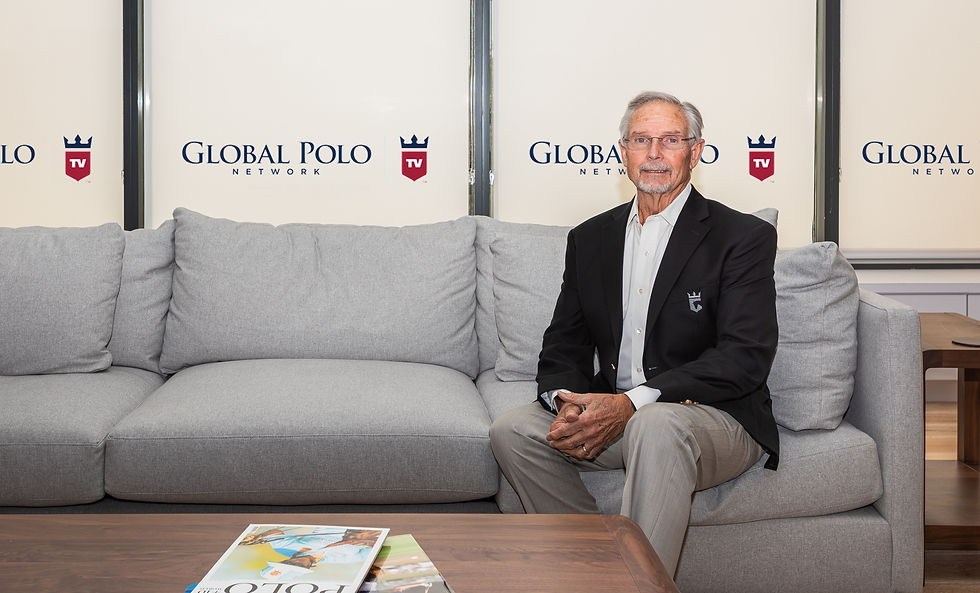These days people try to adapt to a new way of life, as the COVID-19 pandemic changed even our most basic routines. When it comes to sports, watching the games live along a field is probably the thing everybody misses the most. In this context, live broadcasting and live streaming play a key role. Nowadays, when it comes to broadcasting polo, David Cummings is probably one of the most important figures as he is the CEO of Global Polo Entertainment, a for-profit, wholly owned subsidiary of USPA Global Licensing and Incorporated. David spoke to CLICKPOLO USA about live streaming and what the future holds for polo.

“As we are all aware, the COVID-19 pandemic has had a global impact on the world of sports, regardless of the sport: football, baseball, tennis, polo or any other sport for that matter. Some sport activities have resumed, yet without spectators. With the development of new satellite technology over the last five years, live streaming has become most popular due to the reduced cost of production over traditional live broadcasting on CBS, NBC, ESPN, and other networks.”
“Currently, most sports organizations do not allow spectators. On the one hand, live streaming is a real benefit as it offers the polo enthusiast an opportunity to watch the best polo, the best players and their horses via the internet. On the other hand, there is a cost associated with it: pay per view.”
Why are associations now charging for live streamed games and is pay per view here to stay?
"The cost to produce a live game with filming equipment (minimum of 3 to 4 cameras), satellite packs, studio with equipment, camera crew and editing staff can run from $4,000 to $5,000+ per game. Especially, if you include a drone, instant replay, and highlights at the end of each chukker. Regardless of who has the broadcasting rights, the rights holders have no other way to offset their costs in promoting a tournament without charging a subscription fee. Supplemental income from advertisers and sponsors normally is insufficient to cover the live streaming fees and is hard to come by. The only way to reduce the production costs is to reduce the quality of the production by reducing the number of cameras and extra features afforded with a higher price tag."
"I believe pay-per-view is here to stay. The AAP started the live streaming, pay-for-view process with the Argentine Open in 2019, followed by the XPL games, and this year, Cowdray Polo Club (King Power Gold Cup) and Guards Polo Club (Cartier Queen’s Cup) have followed suit in the 2020 season. Without-pay-for-view, we would have missed some of the most exciting games of the season."

What are Global Polo TV’s short, mid-term, and long-term goals?
"We have reached our first goal or threshold of 5,000 subscribers. Currently at 6,800 subscribers, our year end goal is to reach 10,000. We want to be the one place a polo player or polo spectator can go to find live game content, polo news, videos-on-demand, information on the best horses, player interviews, along with other highlights and short form content. Coupled with our marketing campaign to promote high-goal polo worldwide alongside our U.S. Polo Assn. brand, we hope to attract more advertisers and sponsors to help underwrite the cost of maintaining our OTT platform."
"Our ultimate goal is to provide year-round content to our subscriber base by offering multiple subscription-based packages to include premium annual content, the Gauntlet of Polo, and seasonal subscription packages or pay-for-view for domestic and international tournaments. Of course, most of our content, other than live streamed games, will remain accessible for free. Another important long-term goal is to leverage Global Polo TV to drive non-polo fans into the polo lifestyle by creating custom player and horse content and other relevant stories that are intrinsic to polo.
One of our biggest hurdles is to educate the polo audience as to who we are and why they should subscribe, while gaining their acceptance and loyalty."

Photo: Diego Cappella


Comments